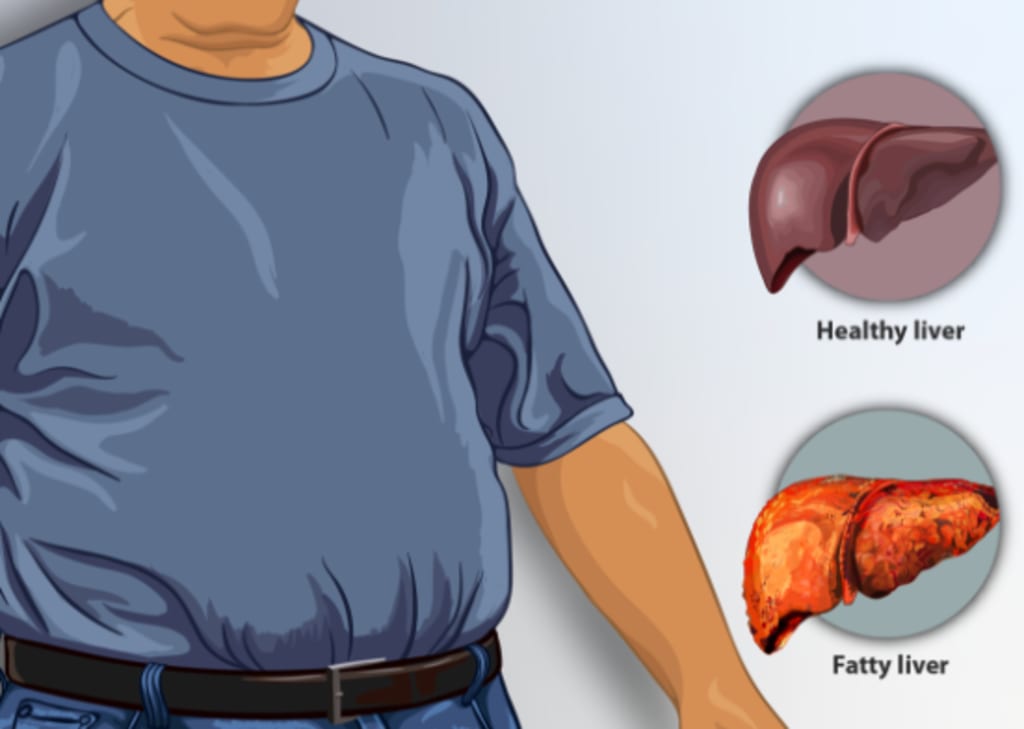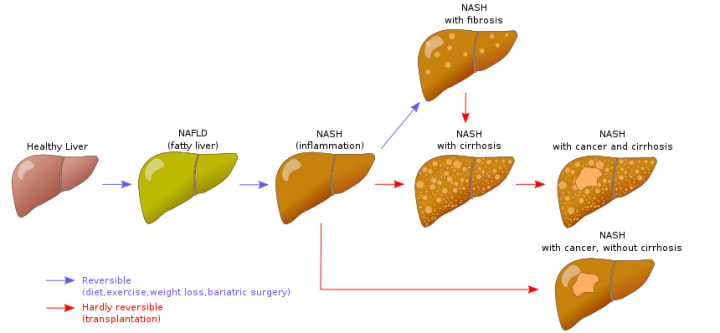
Fatty liver is a condition in which excess fat accumulates in the liver, leading to liver dysfunction. There are two types of fatty liver disease: alcoholic fatty liver disease, which is caused by excessive alcohol consumption, and non-alcoholic fatty liver disease (NAFLD), which is not related to alcohol consumption and is seen in individuals with obesity, type 2 diabetes, and other metabolic disorders.
In its early stages, fatty liver disease is usually asymptomatic and may not cause any symptoms. However, if it progresses, it can lead to inflammation, liver scarring (cirrhosis), and liver failure.
Fatty liver disease can occur at any age, but it is most commonly seen in middle-aged or older adults, and in individuals who are overweight or have obesity. Other risk factors for developing fatty liver disease include high alcohol consumption, high levels of blood sugar, and high levels of triglycerides (a type of fat in the blood). Fatty liver disease is also seen in people with type 2 diabetes, high cholesterol, and those taking certain medications.
The symptoms of fatty liver disease may not be apparent in the early stages, but as it progresses, some common symptoms can include:
1. Fatigue
2.Weakness
3. Weight loss
4. Abdominal pain or discomfort
5. Nausea
6. Poor appetite

Having these symptoms does not necessarily mean you have fatty liver disease, as they can also be symptoms of other conditions. To determine if you have fatty liver disease, it is important to see a doctor for proper diagnosis and treatment.
Fatty liver disease and diabetes are closely related and can influence each other in several ways:
Common risk factors: Many of the same risk factors that contribute to the development of fatty liver disease, such as obesity and poor diet, also contribute to the development of type 2 diabetes.
Insulin resistance: Fatty liver disease can lead to insulin resistance, which is a key factor in the development of type 2 diabetes. Insulin resistance occurs when the body's cells do not respond properly to insulin, leading to high blood sugar levels.
Chronic inflammation: Fatty liver disease can cause chronic inflammation in the liver, which can contribute to the development of insulin resistance and type 2 diabetes.
Worsening of diabetes: In individuals with both fatty liver disease and type 2 diabetes, the liver's ability to regulate blood sugar levels may be impaired, leading to worsening of the diabetes.
It is important to manage both conditions through lifestyle changes such as a healthy diet, regular physical activity, and monitoring of blood sugar levels. In some cases, medications may also be needed to manage both conditions. Consult a doctor for proper diagnosis and treatment.
Here are some steps that can help prevent or slow the progression of fatty liver disease:
Maintain a healthy weight: Losing weight through a balanced diet and regular physical activity can help reduce the amount of fat stored in the liver.
Eat a healthy diet: A diet that is low in saturated and trans fats, and high in fruits, vegetables, and whole grains can help reduce the risk of developing fatty liver disease.
Limit alcohol consumption: Drinking alcohol in moderation or avoiding it altogether can help reduce the risk of developing fatty liver disease.
Control blood sugar levels: If you have type 2 diabetes, it is important to manage your blood sugar levels through diet, exercise, and medication to reduce the risk of developing fatty liver disease.
Exercise regularly: Regular physical activity can help improve insulin sensitivity, reduce inflammation, and promote weight loss.
Avoid fasting or crash diets: Rapid weight loss through fasting or crash diets can actually increase the risk of developing fatty liver disease.
Talk to a doctor to determine the best approach to preventing or managing fatty liver disease, as the steps that may be helpful may vary depending on the individual.





Comments
There are no comments for this story
Be the first to respond and start the conversation.